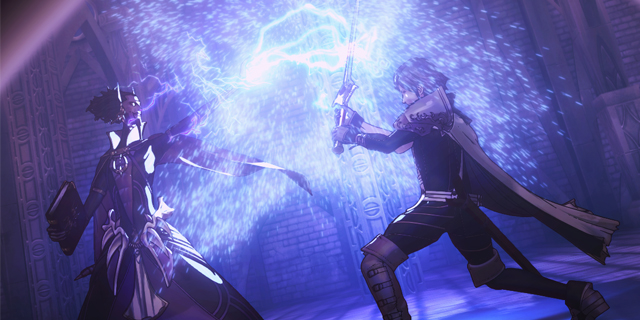
Fire Emblem: Awakening, the latest from Intelligent Systems, strikes a tough balance. It’s at once a celebration of the series’ peculiar quirks and a friendly introduction to newcomers, a reinvention for the modern age and a reminder of days past. That it does it so gracefully is a testament to the developers’ attention to detail, and the resulting game is one that can be different things to different people.
Awakening follows the story of Chrom, the prince of Ylisse, and his team of warriors, as he protects his people and takes on threats. (I’ll try not to spoil story details; there are some very interesting twists, and outside of those moments it’s not that crucial to gameplay.) The overworld map from Sacred Stones returns here, allowing you to take on side missions when you wish, shop in various cities and train up with the occasional battle against “Risen” enemies that pop up on previously-cleared maps.
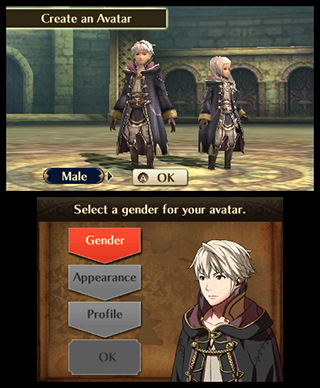
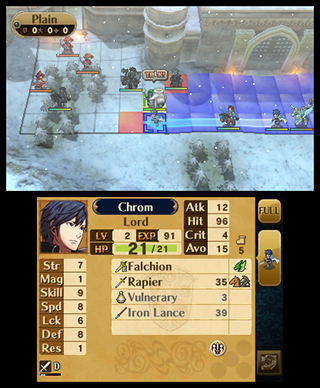
Characters with character
Character portraits are a big part of a Fire Emblem game, so it’s a big deal when character design and art duties are handed to Yusuke Kozaki, most known for his work on No More Heroes. It’s a different approach for the series, but one that feels slightly more detailed and nuanced and fits in very well with Awakening‘s subdued aesthetic.
As has been the case in previous entries, you are an acknowledged member of the team, playing the role of “tactician” in the protagonist’s forces. This time, you’re a bit more prominent: you’re a playable, somewhat customizable character. You’re limited to the sword-and-tome-wielding Tactician class, but can be of either gender, have customized appearance and voice, and choose one attribute to strengthen and one to weaken. These seem small, but the stat modifications can determine whether you’re wreaking havoc from behind the front lines as a high-power mage or holding your own on defense with a high-HP swordsman. You can even develop relationships with characters and marry one, which provides huge support bonuses in battle and has some effects on other units later in the game.
Most maps over the course of the series have been exercises in finding the best choke point and hiding behind it, but Awakening’s areas are often more open. Add to that an abundance of ranged units and fliers, and you’ll be more vulnerable than ever. A counterweight to this change, then, is the “pair up” mechanic, that lets one unit carry another around. The unit “in front” still moves and attacks, and gains a small stat boost based on the stats of the “back” character. Occasionally the back character will also attack, much like it would if standing next to the attacker. This is useful for both protecting weak units and bolstering them as they grow.
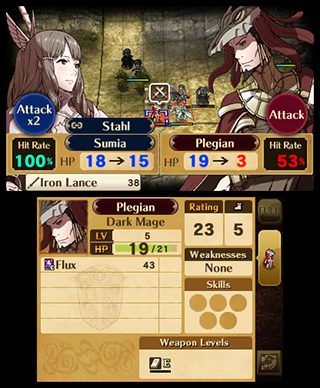
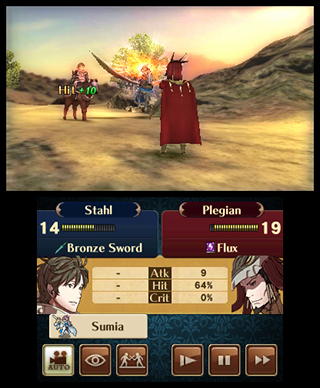
Animations on or off?
Generally thrown in to show “action” in a game that doesn’t have it, the battle animations are fun for… a few battles. Generally, though, they just slow things down. There are different options for turning them off, like just for enemies, just for non-combat spells or altogether. Even if they’re off, though, you’ll see occasional scripted ones with important bosses.
Difficulty has always been a sticking point for many with the Fire Emblem series, and Intelligent Systems did its best to provide solutions for all involved. It did so by dividing it into two categories: the standard strength ratings: Normal, Hard and Lunatic. Added to this, though, is an option tied to the game’s noted “permadeath” mechanic. For those who want to keep it, there’s Classic mode. For those who’d rather not deal with losing units, there’s Casual.
If you’d like a low-stress, manageable adventure, you can set it to Normal Casual and generally be able to power through with one group of units and no grinding. If you want the “traditional” Fire Emblem experience, Hard Classic may be more your thing, but you’ll need to be incredibly cautious, grind as much as possible and rely on Frederick for a while, the game’s starting high-level protector unit. (This is a Fire Emblem tradition, and many consider them a waste of effort as their stats grow slowly, absorbing massive amounts of experience on their way to end-game irrelevance.) We played mostly on Hard Classic and Normal Classic for this review, and though both are fun, one elicited a lot more cursing.
Those who make the time investment and really explore every corner of Awakening will find a lot to enjoy. Raising a unit normally allows it to learn skills, which can range from small stat boosts to enhancements to nearby units. These are matched to the class fairly well, but if you use special items to change a unit’s class, these skills are retained. There can be some interesting combinations of skills, even if it does take quite a bit of leveling up to assemble (as every class change resets the level, and though this doesn’t take your stats back down, you still have to get to the levels to learn the skills you want).
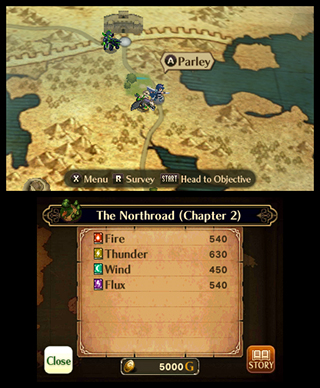
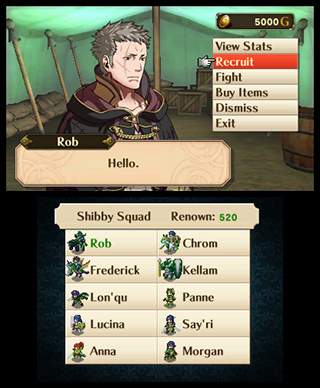
3D used responsibly
The system’s 3D effect has been used responsibly and subtly here. With pixelated sprites instead of polygons for units on the map, it doesn’t quite have the figures-on-a-board look that Ghost Recon: Shadow Wars sported, but it uses many similar fog effects and understated topography features.
Traversing the corners of the map for optional maps yields interesting characters, like series mainstay shopkeeper Anna as a playable unit with a useful combination of skills: lock-picking and healing. You can buy “Reeking Box” items and use them to spawn Risen in a location, letting you intentionally bring on weaker early-game enemies to properly train any late-arrival units that wouldn’t otherwise see battle. These are interesting units to use, and while some have existed in previous games, Awakening makes it much easier to pull off.
The map also allows access to Awakening‘s downloadable content. Nintendo is slowly rolling out DLC, with paid packs containing both characters and missions related to them, as well as minor characters from previous games obtainable in other (unpaid) ways. It’s part of a real push by Nintendo to embrace modern game concepts, and is paired with some intriguing StreetPass and SpotPass features. You configure your own units into a 10-person StreetPass team, that is exchanged with others for various purposes. When one shows up in your game, you can do one of three things: pay to add their Tactician to your army, buy items that their units have equipped or take them on in battle to earn their Tactician for free. Any one action uses up the army, so choose carefully.
If you liked some of the sharp wit in the localization of Kid Icarus: Uprising, expect more of that here, though with a bit less hectic pacing in optional side-story text boxes. It probably helps that the original content tried to keep things fresh, as each pair of units has a different topic of conversation, and they can range from serious pondering of the game’s events to talk of pie-baking.
If you’ve ever loved a Fire Emblem game, Awakening probably has what you enjoyed from any particular installment, and if you like other tactics games but just couldn’t get over the series’ frustrating quirks, this game also seems ideal for you. Most importantly, though, the assembled package works like a charm with whatever approach you decide to take, and will replace many that came before it as fans’ favorite.
Pros: Interesting customization, great localization, map designs provide variety
Cons: Still unforgiving on higher difficulties



















